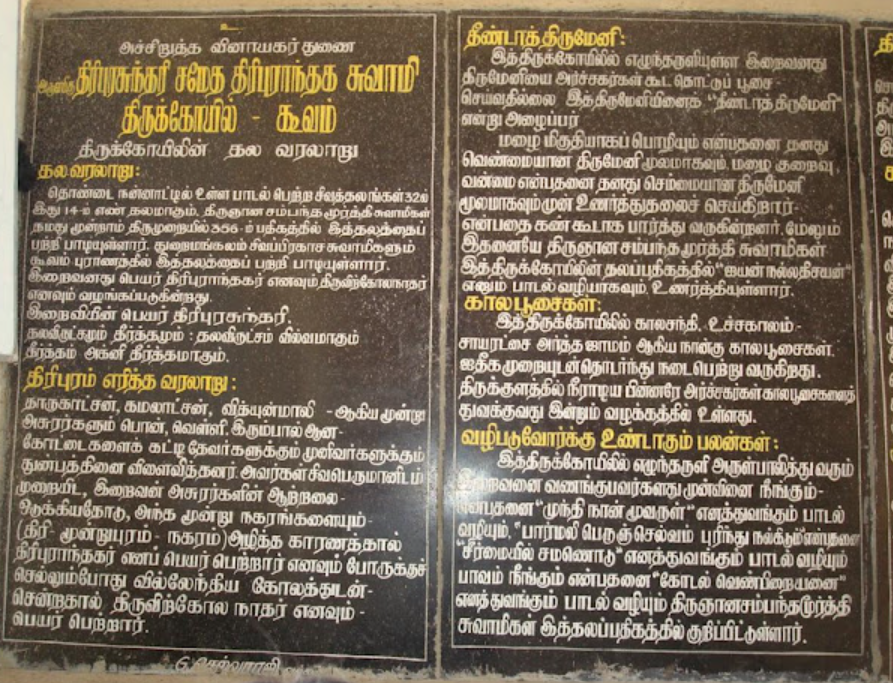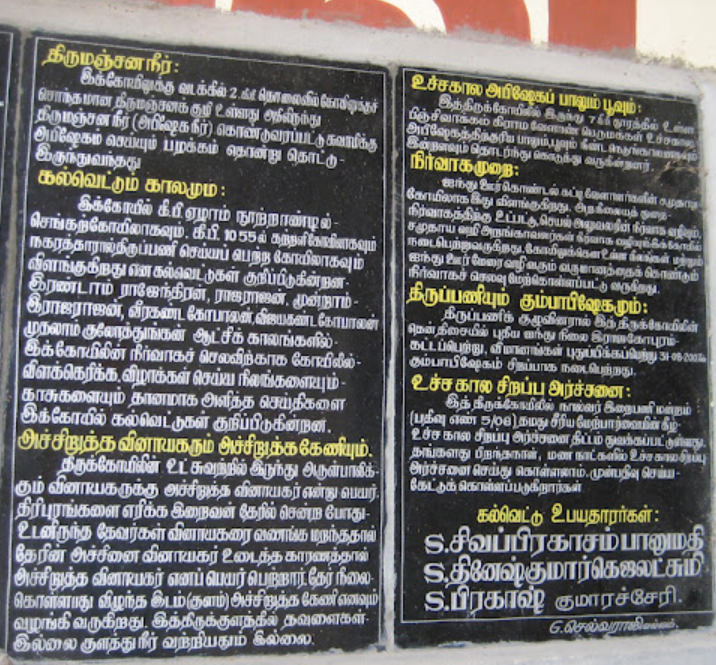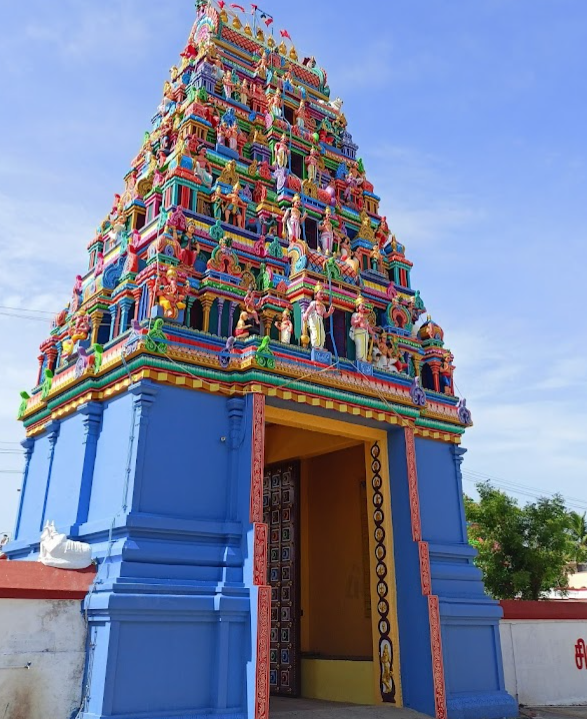

Long ago, three powerful demons—Tharaka, Kamalakshan, and Vidyunmali—misused the boons granted to them by Lord Brahmma and began tormenting the Devas. Seeking protection, the Devas surrendered to Lord Shiva. In his haste to destroy the demons, Lord Shiva set out with his bow without first worshipping Lord Vinayaka, a customary practice before any significant undertaking. The Devas, knowing this rule, also failed to worship Lord Vinayaka, assuming Shiva's backing made it unnecessary.
Angered by the oversight, Lord Vinayaka broke the axle (Kooram) of Shiva's chariot. Realizing his son's act, Lord Shiva requested Vinayaka to repair the axle, which he promptly did. The spot where the axle had broken became sacred, and Lord Shiva manifested as a Swayambu Lingam there. This place was initially called Kooram, which later evolved into Cooum.
Administration History :
The temple was initially built during the 6th-7th century Pallava period and later reconstructed and extended during the Chozha, Pandya, and Vijayanagara periods. Over time, various kings made contributions to its upkeep, including Rajendra II, Kulothunga I, and Vijayanagara Nayaks. Currently, the temple is maintained by the local administration, with regular pujas and festivals conducted, ensuring the preservation of its heritage and rituals.
